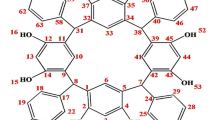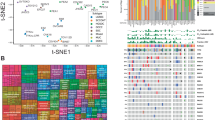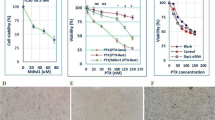Abstract
Pyrrolidino-4-iodotamoxifen (idoxifene) is a new non-steroidal antioestrogen currently undergoing phase I clinical evaluation. Using idoxifene and tamoxifen and two additional analogues of tamoxifen (3-hydroxytamoxifen and 4-iodotamoxifen) and the imidazole-based calmodulin inhibitor, calmidazolium, a strong positive correlation (r2 > 0.95) was observed between cytotoxicity and inhibition of calmodulin-dependent cyclic AMP phosphodiesterase (e.g. mean IC50 across four human ovarian carcinoma cell lines of 4.5 microM for idoxifene and 6.3 microM for tamoxifen). Using two parent human ovarian carcinoma cell lines (41M and CH1; both oestrogen receptor negative) in which acquired resistance to doxorubicin or cisplatin has been generated, we have determined the ability of idoxifene to overcome resistance in these lines. At a non-toxic concentration of 2 microM, idoxifene appeared at least as effective as the clinically used multidrug resistance modifiers verapamil and tamoxifen in overcoming doxorubicin resistance in two acquired resistant cell lines shown to overexpress the P-170 efflux glycoprotein. Non-cross-resistance between cisplatin and idoxifene was observed in two acquired resistant cell lines possessing contrasting mechanisms of resistance to cisplatin (41McisR6 reduced drug transport and CH1cisR6 resistance mediated at the level of DNA). In one of four cell lines (CH1), synergism between idoxifene and cisplatin was observed by median effect analysis. However, with the 41M and its 6-fold cisplatin-resistant variant, antagonism was observed. These observations made by median effect analysis appeared to be unrelated to platinum uptake or removal of platinum-induced DNA interstrand cross-links. These in vitro data suggest that idoxifene may be usefully combined with doxorubicin in the clinical setting, but caution should be exercised in combining it with cisplatin in the treatment of certain tumours.
This is a preview of subscription content, access via your institution
Access options
Subscribe to this journal
Receive 24 print issues and online access
$259.00 per year
only $10.79 per issue
Buy this article
- Purchase on SpringerLink
- Instant access to full article PDF
Prices may be subject to local taxes which are calculated during checkout
Similar content being viewed by others
Author information
Authors and Affiliations
Rights and permissions
About this article
Cite this article
Sharp, S., Rowlands, M., Jarman, M. et al. Effects of a new antioestrogen, idoxifene, on cisplatin- and doxorubicin-sensitive and -resistant human ovarian carcinoma cell lines. Br J Cancer 70, 409–414 (1994). https://doi.org/10.1038/bjc.1994.319
Issue date:
DOI: https://doi.org/10.1038/bjc.1994.319



